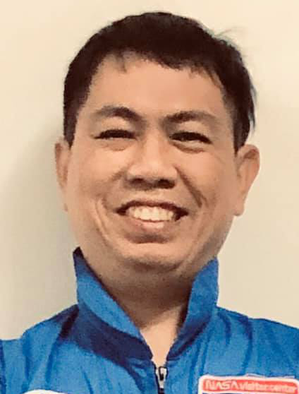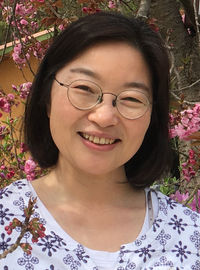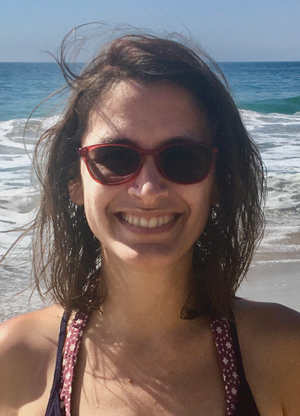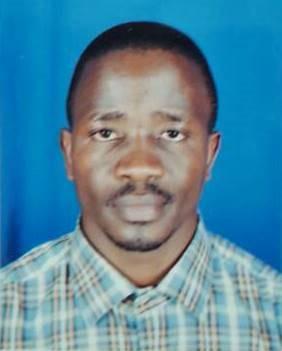Low-Tech Astronomy Education
Parallel Session
3rd Shaw-IAU Workshop on Astronomy for Education
Session timeblocks
Tuesday Oct. 12, 2021
UTC: 2 p.m. -
3:30 p.m.
Friday Oct. 15, 2021
UTC: 6 a.m. -
7:30 a.m.
Schedule
-
Inexpensive/cheap/low-cost Astronomy and quality: between prejudices and reality
Tuesday Oct. 12, 2021
UTC: 2 p.m. - 2:15 p.m.Friday Oct. 15, 2021
UTC: 6 a.m. - 6:15 a.m.Astronomy is the oldest scientific discipline to which Humans dedicated time in a systematic way. The knowledge grew exponentially in the last centuries and also the technological needs of the astronomers to decipher the Cosmos. But, is the knowledge and comprehension of the main concepts of the discipline also connected with the new technologies or you can teach and learn first level astronomy at a low-cost?. What really means ŇinexpensiveÓ in a world where the technology is dominant, but has no sense for the most part of the people? The idea of this session is to show how understand big discoveries with low cost resources and discuss the impact , with some examples, of educating and developing the critical thinking in the new and overloaded with technology generations.

Beatriz Garcia (ITeDA (CNEA-CONICET-UNSAM) and National Tech. University-Mendoza)
Coauthors: Rosa M. Ros (Technical University of Catalonia), Ricardo Moreno (Colegio Retamar de Madrid,), Ederlinda Viñuales (University of Zaragoza,)
For more information about this talk click here
-
Development of Student's Planetarium for the teaching of Astronomy
Tuesday Oct. 12, 2021
UTC: 2:15 p.m. - 2:25 p.m.Friday Oct. 15, 2021
UTC: 6:15 a.m. - 6:25 a.m.A home-made planetarium is a STEM project for presenting educational and entertaining shows about astronomy and the night sky, or for training in celestial navigation. The design that I am proposing is a 6-meter diameter dome, which can accommodate about 15 students comfortably at any time. Having the dome to conduct Astronomy Lessons reduces the need to have a perfect weather all the time for star gazing, which is a rare event in light polluted cities. The main advantage is student engagement: hands-on construction, planning and implementing a planetarium programme. Besides the low cost and portability, the home-made planetarium can encourage sharing of ideas, problem solving and creativity amongst students.

Tan Hoe Teck (School of Science and Technology, Singapore)
For more information about this talk click here
-
IAU-NASE Workshop in Korea
Tuesday Oct. 12, 2021
UTC: 2:25 p.m. - 2:35 p.m.Friday Oct. 15, 2021
UTC: 6:25 a.m. - 6:35 a.m.In South Korea, the NASE course first started this spring 2021. There are various approaches to teachers' training courses in our country and the NASE workshop is one important to making comprehensive programs for all levels of training courses. Each has a different character and expectation, and the NASE program is expanding our training course to comprehensive programs at various levels. The lecture on astronomy covering most areas of basic astronomy and the hands-on session with materials that students can easily access. In addition, the organizational operation and philosophy of NASE are delocalized and sustainable in their countries, so it will be helpful not only in astronomy perspectives but also in learning organizations.

In-Ok Song (Korea Science Academy of KAIST)
For more information about this talk click here
-
Understanding Space Travel
Tuesday Oct. 12, 2021
UTC: 2:35 p.m. - 2:45 p.m.Friday Oct. 15, 2021
UTC: 6:35 a.m. - 6:45 a.m.Astronomy means many difficult notions and the teacher must know the power of understanding of a child and to make space for real empathy and creative solutions. To achieve this the teacher must use intuitive models and experiments. I present a project achieved with my students about a travel in our Solar System. Why do we have to travel at first in a circular orbit? What is an escape velocity? What is a Hohmann transfer orbit? What is a launch window? These are some of questions the project answers. After many years of teaching I realize that most important are not the formulas, not the problems solving, not to use very sophisticated devices but to make students to imagine, to see or to visualize, using simple objects and if it's possible the objects they have in the classroom.

Corina Lavinia Toma (IAU associate member, T. Popoviciu Computer Science School Cluj-Napoca)
For more information about this talk click here
-
The Low-Tech and High-Quality correlation in Astronomy Education.
Tuesday Oct. 12, 2021
UTC: 2:45 p.m. - 2:55 p.m.Friday Oct. 15, 2021
UTC: 6:45 a.m. - 6:55 a.m.LTA is highly beneficial for teacher training since the amount of technical knowledge and skills required can be intimidating. Regardless of the teachers background, LTA has an enormous impact in breaking down walls and making science fun, interesting and approachable. According to teachers from Dominican Republic and the USA, two countries with different realities and approaches to technology, LTA has been useful. LTA does not mean low standards or low expectations. We have maintained a high level of technical concepts and skills training, while providing hands-on materials and creating small learning communities through social media and Whatsapp, which combined serve to boost confidence, maintain engagement, and provide platforms for clarifications and deeper levels of understanding.

Breezy Ocaña Flaquer (San Diego State University)
Coauthors: Gabriela Flaquer (Fundación Generacciones)
For more information about this talk click here
-
Universe observing using locally constructed Instruments: A case of Young Astronomer's Briefcase
Tuesday Oct. 12, 2021
UTC: 2:55 p.m. - 3:05 p.m.Friday Oct. 15, 2021
UTC: 6:55 a.m. - 7:05 a.m.Astronomy links concepts in Science and a basis for understanding Geography. Its historical development provides teaching methods of Science and Mathematics. Hands-on activities provide exciting ways to understand science and guide students into Science and upcoming Astronomy careers being developed in Tanzania. We will describe the application of Young AstronomerŐs Briefcase (YAB) as a tool kit for carrying out hands-on activities for universe observation by using easily available materials around the school and home such as ruler, simplified quadrant and Spectroscope. YAB has been explored and tested through NASE Trainings and thus the need to scale-up such a tool kit during Astronomy trainings across Tanzania.

Deodatus Stanley Kiriba (Astronomy and Space Science Association of Tanzania (ASSAT) and Tanzania Agricultural Research Institute (TARI)-Selian Agricultural Research Center)
Coauthors: Daudi Mazengo (Astronomy and Space Science Association of Tanzania (ASSAT) and University of Dodoma, Dodoma, Tanzania), Uwezo Kafugugu (Astronomy and Space Science Association of Tanzania (ASSAT) and Mugabe Secondary School, Dar es Salaam, Tanzania)
For more information about this talk click here
-
Discussion Panel: Low Tech Astronomy Education
Tuesday Oct. 12, 2021UTC: 3:30 p.m. - 3:05 p.m.
Friday Oct. 15, 2021
UTC: 7:30 a.m. - 7:05 a.m.Chair:

Rosa M. Ros
Panel: Beatriz Garcia
(ITeDA (CNEA-CONICET-UNSAM) and National Tech. University-Mendoza), Deodatus Stanley Kiriba
(Astronomy and Space Science Association of Tanzania (ASSAT) and Tanzania Agricultural Research Institute (TARI)-Selian Agricultural Research Center), Breezy Ocaña Flaquer
(San Diego State University), In-Ok Song
(Korea Science Academy of KAIST), Tan Hoe Teck
(School of Science and Technology, Singapore), Corina Lavinia Toma
(IAU associate member, T. Popoviciu Computer Science School Cluj-Napoca)
Posters
-
Bringing Astronomy to the students and teachers using “AppStronomy”
Rupesh Labade (Inter-University Centre for Astronomy and Astrophysics, Pune)
Nowadays we can see the evolution of science and technology worldwide. But teachers and students in many developing countries are not aware of it that much. Also, they should know how we can use this technology in the learning and teaching process. So here I want to share my practices with all of them. I have done some low-cost experiments with some mobile applications and used them in teaching and learning astronomy. It's proven that they were so effective during the pandemic era. As students during pandemics are away from their school laboratories, they are missing their regular experimentation. Here students can easily make some low-cost experiments using some mobile applications. This also can be used as the best teaching aids. We basically call it AppStronomy
-
Development of a solar demonstrator projected in the class room modified from the NASE demonstrator
Tomita Akihiko (Wakayama University), Yumine, Toshiki (Chiben Gakuen Wakayama Elementary School)
The diurnal motion and the different movements of the Sun throughout the year, which are studied in elementary school, are things that can be observed in daily life, but are not easy for students to understand. The teacher training program, NASE, has developed an excellent teaching material called the solar demonstrator that can be easily constructed. By attaching a flashlight to the arm of the NASE solar demonstrator and projecting it onto the ceiling and walls of the class room, an elementary school teacher Yumine was able to show the movement of the Sun to the students in the entire class room. The teacher, along with all the students, was allowed to observe the movement of the Sun throughout the classroom. The teacher can enjoy the virtual Sun in the classroom with all the students.
-
Impression of Astronomy in Persian culture and history inspired by poems of Khayam and Attar
Mahdi Rokni (Astronomy instructor and manager of SINA), Fatemeh Abdoust (Persian literature graduate), Parham Eisvandi (Astronomy instructor and Photographer), Maryam Hadizadeh (Amateur astronomer), Fatemeh Hamidani (English literature graduate)
There is a huge connection between science, nature and literature with Persian culture in Iran. If you look into Iran's history and search in many places or read Persianpoems you can find a lots of astronomy knowledge. Some of Iranian great poets have been also astronomers such as Khayam or they became mystics like Attar Nishaburi. This is about stories and people who lived in different ages or lived at the same age together and they have had a huge impression on Persian culture. it can also separate science, literature and mysticism from each other.
-
Lessons learnt from e-Amanar online teacher training though WhatsApp for Sahrawi Refugee teachers
Jorge Rivero González (Joint Institute for VLBI ERIC (JIVE)), Sandra Benitez Herrera (IAC), Felipe Carrelli (Oswaldo Cruz Foundation), Alba Fernández-Barral (CTA), Sarah Massalkhi (Instituto de Física Fundamental CSIC), Eduardo Monfardini Penteado (Office of Astronomy for Education/Max Planck Institute for Astronomy), Demetrio Rodrigues (independent Filmmaker), Andrea Rodriguez Antón (Instituto de Ciencias del Patrimonio CSIC), Nayra Rodriguez Eugenio (IAC), Fabio del Sordo (FORTH), Diego Torres Machado (Brazilian Center for Research in Physics), Mayte Vasquez (EUMETSAT)
The e-Amanar pilot provided follow-up capacity building for teachers involved in the 2019 Amanar project at the Sahrawi Refugee camps in Tindouf, Algeria, through their phones via WhatsApp that is efficient to slow internet connection environments. e-Amanar responded to challenges raised by the COVID-19 Pandemic in 2020 such as the closure of non-essential humanitarian actions at the camps affecting teachers' continuous education. By providing mobile internet data to 17 teachers we organised a 4-month training using audios, texts and slide images to foster discussion about the universe. The pilot resulted in a very successful asset for the continuous connection with teachers and thus supporting Amanar's long-term goals. In the talk, we will present the pilot's outcomes and lessons learnt.
-
Let's observe the sky from home; online observation, a new way to enjoy and learn astronomy
Parham Eisvandi (Astronomy instructor and Photographer), Hossein Khezri , Mahdi Rokni (Astronomy instructor and manager of SINA)
Mehr Observatory with cooperation of Iranian Teachers Astronomy Union (ITAU) and Network for Astronomy School Educations (NASE) has been doing some online observation recently for students, teachers and astronomers around the world. This is a useful activity for online courses and for those sky events which can be visible with a telescope. Imagine there is a conjunction between Jupiter and Saturn and the best time to observe it is not visible for your region. So you can observe it online from the other telescope in a visible region. That is what Mehr observatory has been doing since last year. It is completely possible to observe moon, sun and planets from our observatory. So, let's do more.
-
Sky Exploration Festival, a different experience for students
Hassan Baghbani (President of Iranian Teachers Astronomy Union), Mahdi Rokni (Astronomy instructor and manager of SINA), Hossein Khezri , Maryam Papari , Parham Eisvandi (Astronomy instructor and Photographer), Melika Gonbadi
Sky exploration festival is a time to objectify the science of astronomy and involve in environment to improve the personal life for students. Iranian Teachers Astronomy Union (ITAU) created this festival and started since 2013 which has involved thousands of students so far. During this festival groups of students camp in the nature and spend a day with astronomy leaders. They connect to astronomy combined with geology, biology, literature, art, hiking and sports. The most important and interesting point about this festival is that all of the works, managements and teaching are done by other students who have learned and experienced it before. Methods and structure of the sky exploration festival can be used now by all of the countries and schools around the world.




